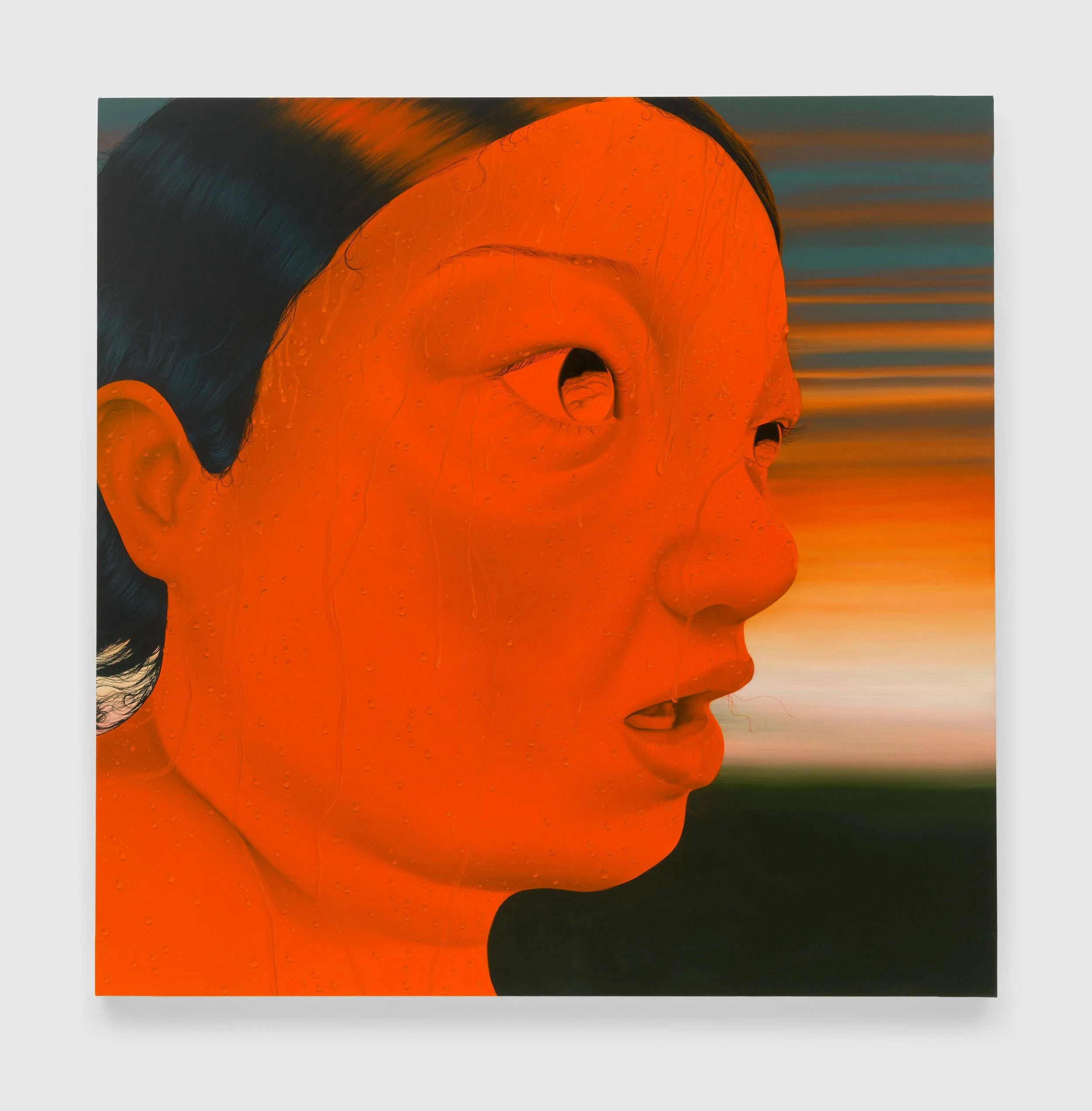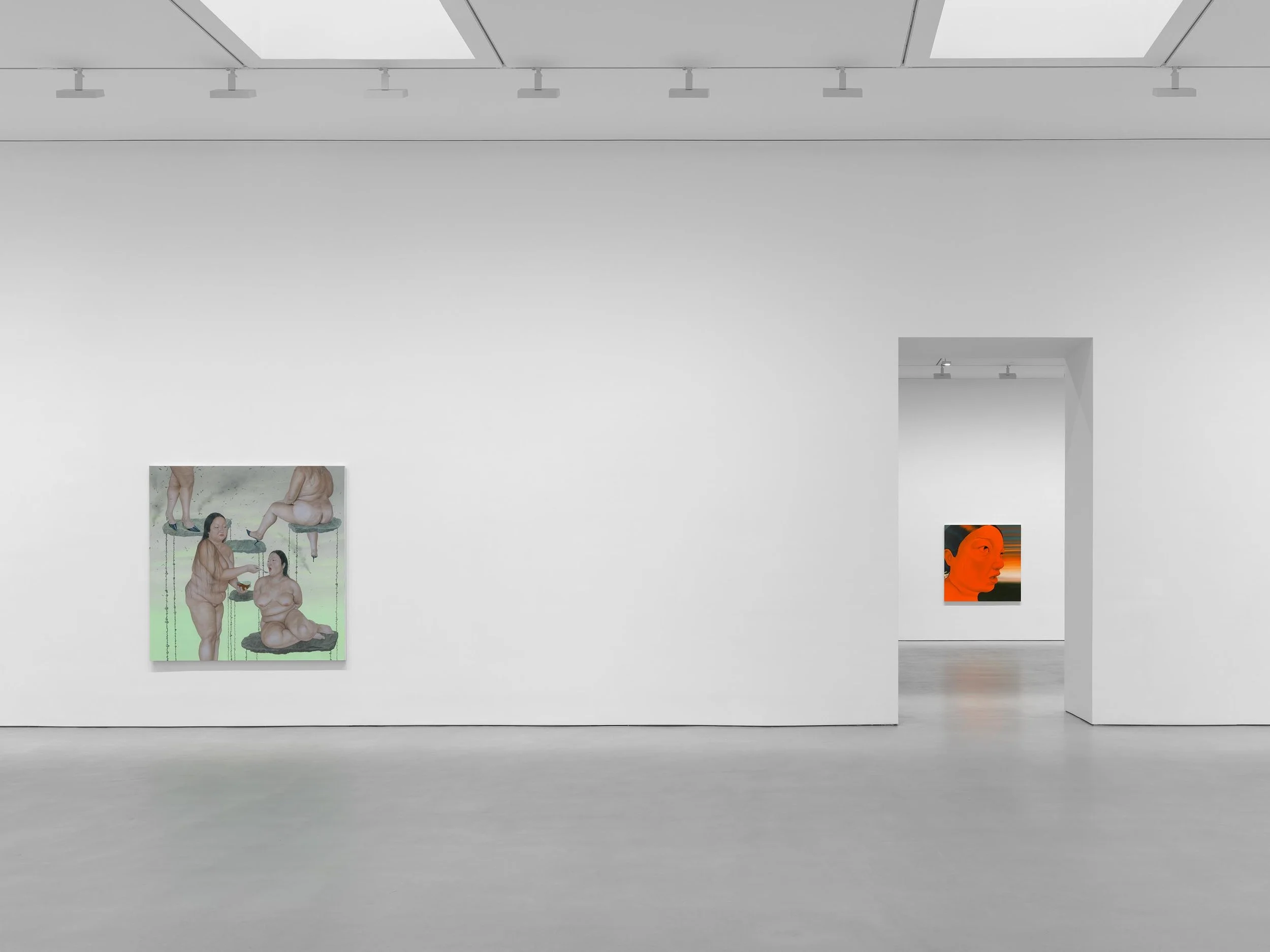Sasha Gordon
Flame Like Blush, 2024
Oil on linen
60 x 60 1/4 inches
Courtesy the artist and David Zwirner, New York
text by Emma Grimes
On an unpleasantly hot and humid September evening, unfazed and well-dressed New Yorkers filed into David Zwirner Gallery, where the latest work from Brooklyn-based artist Sasha Gordon is on view.
Last year, David Zwirner and Matthew Brown announced that they would co-represent Gordon. While still a student at the Rhode Island School of Design in 2019, she showed some work with Brown and began her rise to prominence. Most recently, she had a solo show at the Institute of Contemporary Art, Miami.
Haze consists of seven paintings that turn inwards, probing Gordon’s complicated relationship with herself. Her hyperrealist self-portraits, often using neon hues, almost seem to glow. And she includes surreal splashes: a chain of tiny, floating rocks tethered to the one she sits on or the straps of her LED-lit tank top floating off into the canvas. The effect sometimes evokes science fiction, as if a UFO might just drift into the next canvas.
Gordon brazenly pushes past the surface of her image, instead foregrounding the cruel and varying personas of her psyche. That these works are on exhibit and available for an audience to view feels incidental to their purpose.
Sasha Gordon
It Was Still Far Away, 2024
Oil on linen
72 1/4 x 96 1/8 inches"
Courtesy the artist and David Zwirner, New York
In It Was Still Far Away, a figure in Gordon’s likeness, wearing a white tank and mesh shorts, sits on a picnic blanket as a neon-orange mushroom cloud bursts behind her. As the bomb explodes, she clips her toenails, headphones on.
On the subway, waiting for a coffee, and before closing our eyes at night, our screens bring every global disaster to our door. And it seems that even our language has fallen behind; words like catastrophe and tragedy imply an anomaly, but what if watching war and famine and genocide unfold has become as quotidian as eating, working, and sleeping?
In Trance, a close-up of Gordon’s distorted face, painted in fluorescent gray, shows her eating a nail clipping. Below, a hand that’s speckled with more nail clippings is held out like an offering. In some ways, this painting of a hard-to-break habit feels more revealing than any of her nudes.
In the following room, the paintings turn increasingly self-lacerating. In Whores in the Attic, three nude women with oblong breasts, sturdy legs, and skin dimpled like the texture of the moon, stand insolently in front of the other Gordon, peeking out from behind a door. One of the antagonists haughtily smokes a cigarette while the other two gaze with scorn.
Sasha Gordon
Whores in the Attic, 2024
Oil on linen
96 1/8 x 78 1/4 inches
Courtesy the artist and David Zwirner, New York
Her thorny relationship with herself turns even more torturous. In Pruning, one of the antagonizing personas is holding another Gordon underwater inside a glass box, her skin illuminated a brilliant green-blue. The underwater Gordon stares straight ahead, directly confronting the viewer, while her knees have cracked the corners of the glass. Some air bubbles, rendered with stunning technical precision, float up to the surface.
In the exhibit’s final painting, Husbandry Heaven, set against a mint-green and grey swirled backdrop, one version of Gordon forces food into the mouth of another, hands bound behind her back. Ashes float down from somewhere, smoke drifts across in swirls, and fragments of other selves are perched on floating rocks. Unlike the former paintings, this one has a distinct tenderness. For all her looks of scorn and ridicule, Gordon never abandons herself, and one is left wondering what love and care for oneself might look like.
Haze is on view through November 1 at David Zwirner Gallery 537 West 20th Street, New York.





